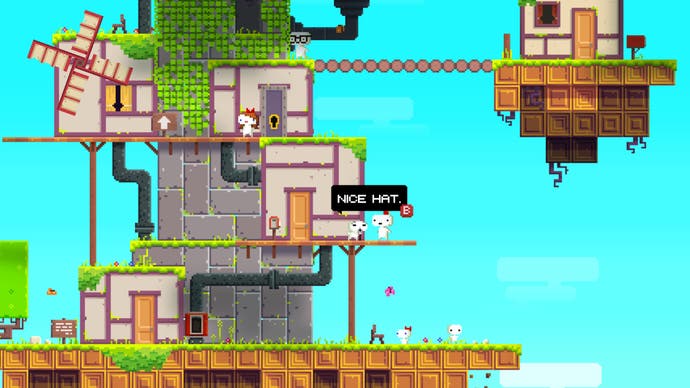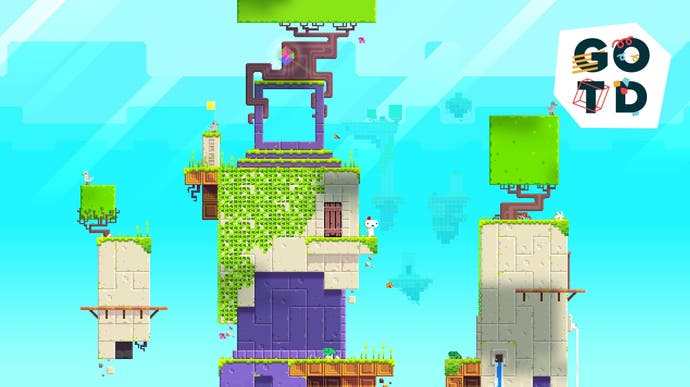Games of the Decade: Fez and the doors of perception
2D or not 2D?
To mark the end of the 2010s, we're celebrating 30 games that defined the last 10 years. This is the last entry - you can now find all the articles in the Games of the Decade archive, and read about our thinking about it in an editor's blog. Stay tuned for a couple more special articles tomorrow.
Fez is one of those magic-trick games. You could call it a gimmick without being disrespectful - a good gimmick can enliven any game - but I'd define a gimmick as a novel, repeatable concept that gives you a little jolt of satisfaction when you encounter it. What Fez does is different. Its trick is very simple, but has deep implications. It defines everything about the game. It constantly changes the way you think. Playing the game, you perform this trick all the time, and yet every time you do it you still do a little internal gasp as it reorders your perceptions. It's impossible, but it's real. It's magic.

The trick is this: Fez is a two-dimensional platform game set in a world where three dimensions exist, but only two of them can be perceived at once. This fact is so brain-scrambling that the inhabitants of this world have forgotten it, or repressed it. It is revealed to our hero Gomez when he puts a magical red hat on his head. From then on, he - you - can rotate his world through four viewpoints, snapping it back into a flat plane where everything is reordered and much is revealed. The game world's three-dimensionality, its solidity, is real - it looks like pixel art, but is actually built out of cubes - but it can only be seen fleetingly as you flick from one plane to another, the way an illustration in a pop-up book leaps from the page and then collapses back in again. You have to hold it in your head.
Artist and designer Phil Fish and programmer Renaud Bédard could have used this trick to construct a tortuous brain-teaser of a puzzle game, but they didn't. Instead, they made a spooky, trippy, lyrical interrogation of the past and future of video games - and an adventure full of mystery and awe (with no small assistance from Disasterpeace, whose distorted synth soundtrack, by turns ethereal and sinister, was an instant classic).
Fez isn't about challenging yourself with intricate puzzles, tricksy platforming or combat. (There is no combat; this is a completely non-violent game, and not only do you not miss it, you don't even think about it.) It's about letting your inquisitiveness take charge and giving in to your sense of wonder and surprise. It's about flick, flick, flicking through different points of view until things make sense, using the power of imagination to reduce impassable distances to nothing and summon new pathways from nowhere. It's about holding an entire world in your hands, turning it to and fro like a jewel and gazing into its faceted depths.
Can any medium other than video games do this? For Fish, Fez was about reaching into the Nintendo games he had obsessed over as a child - the early, 2D Marios, Zeldas and Metroids - almost as if pushing his head into the TV, to see what other wonders they might contain. Incredibly, he found a way to explode them into three dimensions while preserving their pictorial mystery, their ability to put things outside the frame. (Remember when Mario jumped up and ran outside the screen?) It was an act of devotion. It was a way to make old video games endlessly new, to recapture that almost frightened thrill when we saw them for the first time. It was a feat of conjuring. Fez is magic. All games are.










